Energy efficiency requirements for homes are becoming increasingly stringent, and builders are forced to look for innovative solutions to meet the high standards. The nZEB regulations mandatory in Romania as of December 31, 2020 require the construction of energy-efficient, well-insulated houses in order to reduce energy consumption and maintenance costs, but also to protect the environment.
In this context Class Meister, builder of timber-framed houses, proposes a modern solution by using a suspended wooden floor, replacing the reinforced concrete slab. This construction solution, aided by high-performance insulation materials, ensures both superior energy efficiency and low environmental impact, meeting the challenges of sustainable construction.
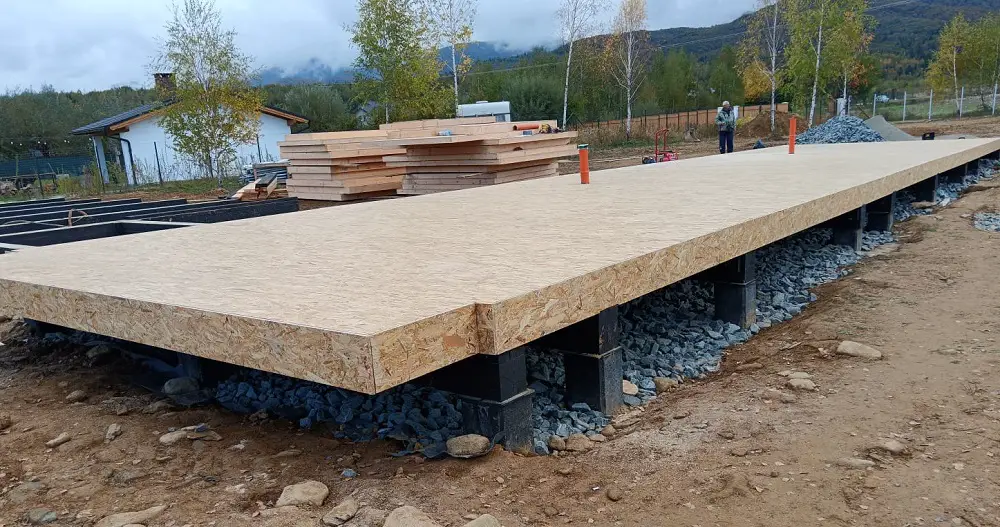
What are the advantages of a wooden floor compared to a reinforced concrete slab?
The use of an insulated suspended timber floor has many advantages compared to a reinforced concrete slab positioned on the ground. The most important of these are increased energy efficiency, house efficiency, reduced erection time and accuracy, reducing the possibility of errors and impact on the ground. The installation of this type of foundation can be done on Krinner / Tehnopieux screwed micropiles or reinforced concrete piles. Whichever method is chosen, the technical design must first be made, taking into account the geotechnical and topographical studies and the load discharges for each supporting element.
The wooden floor offers a better intrinsic thermal insulation compared to concrete. It is also lighter than concrete slab, which reduces the load on foundations. This can be a significant advantage in areas where the ground has limited bearing capacity.
Wood decking is the best way to insulate your house from the ground because the vast majority of thermal bridges are eliminated, hard and expensive to avoid with a reinforced concrete slab system. It eliminates that cold feeling in the soles of your feet when walking barefoot around the house. The condition is that the suspended floor is well insulated, with good quality and properly implemented materials, contains a sufficiently thick layer and is properly sealed.
It's no news that a timber-framed house can be built faster than a concrete or brick one. The time can be reduced even further by using suspended wooden floors. It Quick to fit in 3-4 days, This helps the house to be erected in less time, with greater accuracy because factory-made wooden panels are used, and at a lower price because the associated costs are eliminated.
When using wooden floors, it is very important to pay attention to the hygrothermal exchange between the floor and the environment on each side of the floor. Good control of vapor transfer into the floor must be ensured, and any risk of moisture trapping must be eliminated by proper ventilation and insulation to move the dew point as far outwards as possible. This is achieved by the correct use of vapor barriers and diffusion membranes, with this on airtightness.
Foundation on Krinner screwed micropiles
Krinner micropilots are an economical solution for residential building foundations, much more environmentally friendly than the classic concrete system.
The stability and load-bearing capacity of this foundation solution is the same as that of a conventional concrete foundation. However, Krinner micro-piles have the advantage of being environmentally friendly, cheaper, more efficient in soils with a deep bearing layer and can be installed quickly as part of an efficient process. For example, a concrete foundation can be made in 3-4 weeks, whereas a Krinner micropile foundation in the same house can be made in just 3-4 days.
Below, section through a suspended foundation on Krinner micropiles by Class Meister:
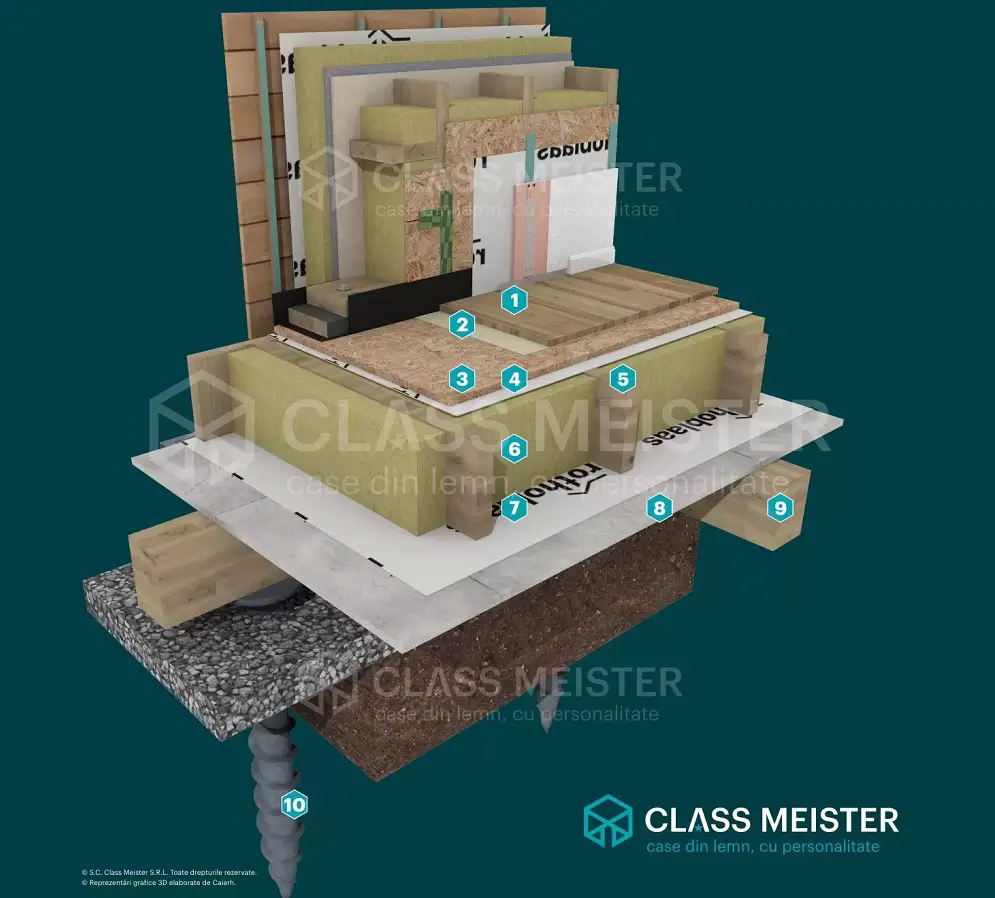
1 - Floor finishing
2 - Backing/adhesive film
3 - OSB nut and feder/Agepan
4 - Smart vapor barrier film & sealing tape
5 - Wooden structure C24, 45x240mm/ 65x240mm
6 - Interior basalt wool insulation
7 - Diffusion film & sealing tape
8 - Fiber cement board
9 - Glulam main beams
10 - Krinner type micropiles
Krinner micropiles can be used for multi-family buildings (apartment blocks), wooden residential buildings, wooden houses, prefabricated wooden houses, carports, terraces, patios, gazebos, pergolas and other constructions that need a well-anchored foundation.
Class Meister can deliver and install Krinner micropilots, being one of the few companies in the country to offer this service and the only one in the region of Moldova.
Thermal insulation of floors
Thermal insulation is a key component in wood floor construction and plays a major role in the energy performance of the building. To achieve good thermal insulation, quality materials with good insulation performance must be used. There are various materials on the market, ranging from natural wood fiber or cellulose to glass wool or basaltic wool.
To effectively evaluate an insulating material there is the thermal transmittance coefficient (U). The lower the thermal conductivity of a material, the more thermally insulating it is and the greater the impact on the energy performance of the house. The use of STEICO or GUTEX wood fiber, cellulose or basaltic wool boards helps to maintain a stable indoor temperature, thus reducing the need for heating or cooling, helping to reduce maintenance costs through lower bills. It creates a healthier indoor climate with lower temperature fluctuations and a positive environmental impact.
Class Meister stands out by using innovative and sustainable solutions for the construction of energy-efficient houses. The suspended prefabricated timber floor, together with the foundation on metal micropiles, offers not only an environmentally friendly alternative to traditional concrete construction, but also significant advantages in terms of thermal efficiency, construction time, durability and a more budget-friendly cost.
Class Meister aims to transform the way homes are built, having a positive impact on the environment and providing energy-efficient housing. Such houses have already been built by the company in Romania, as well as in France (images below) and other European countries.
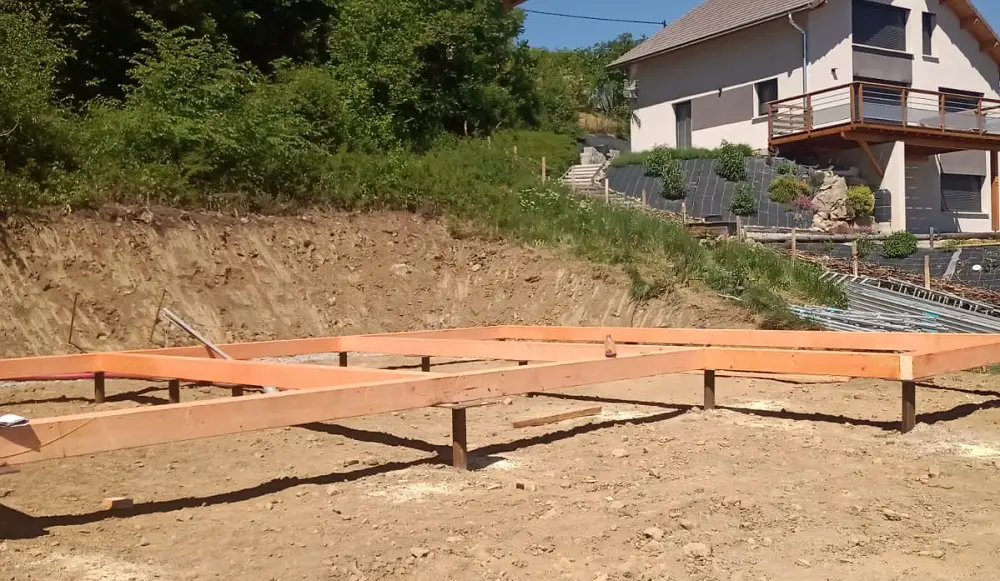
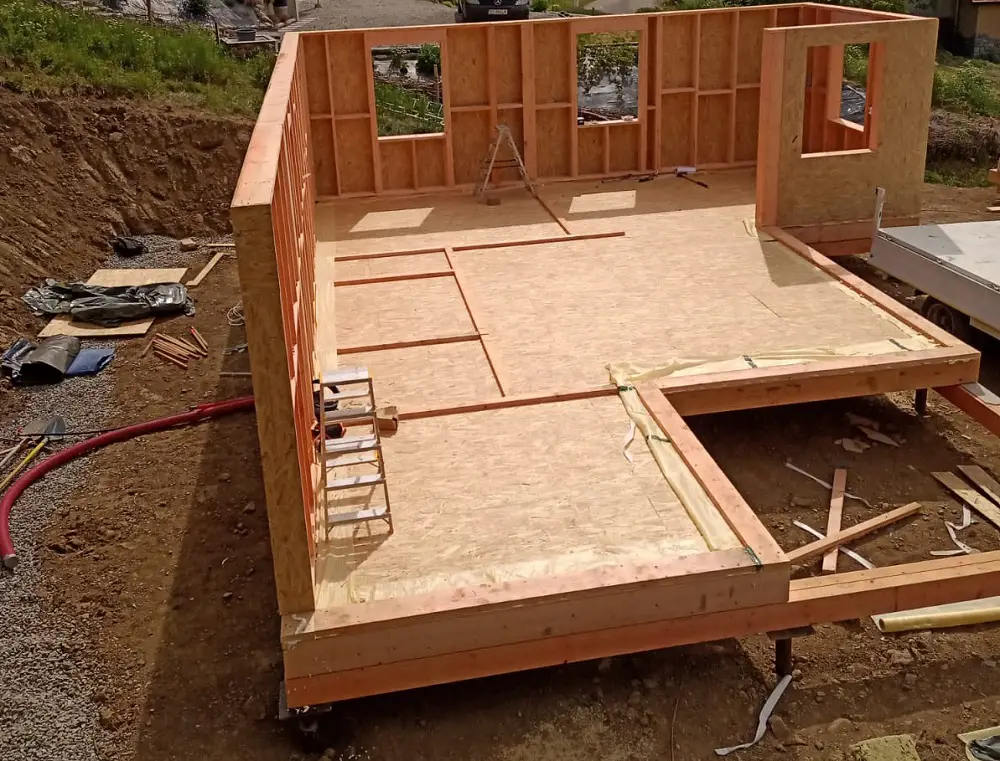
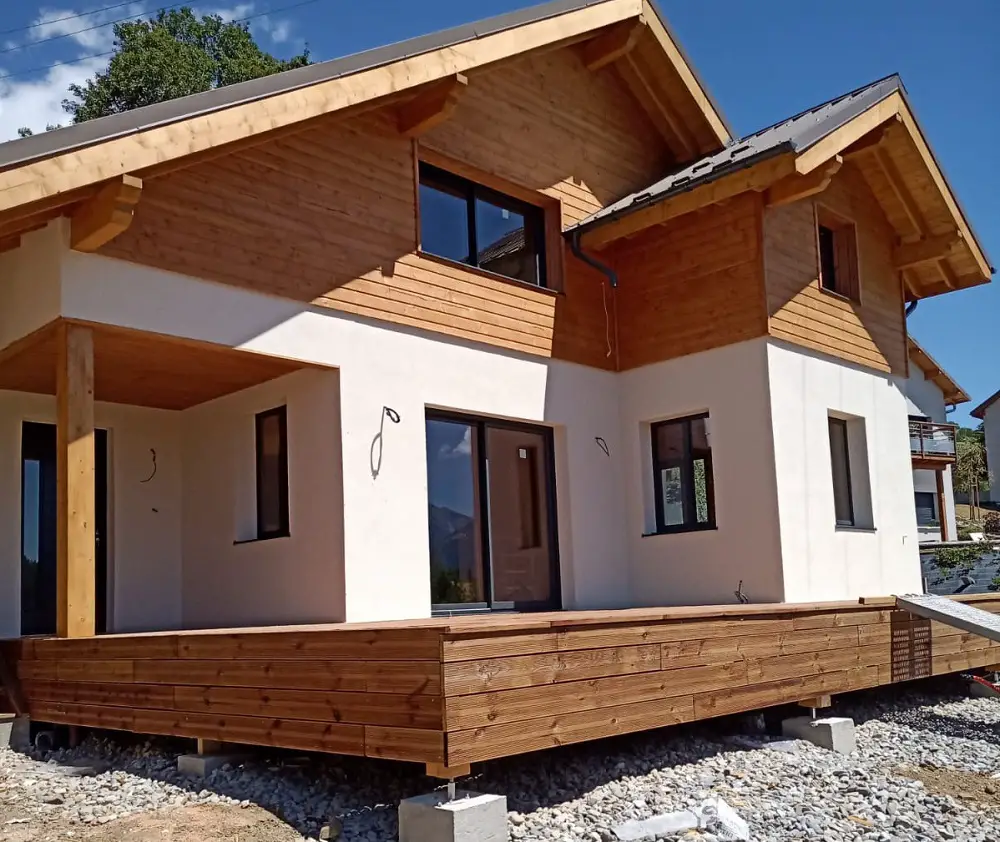


























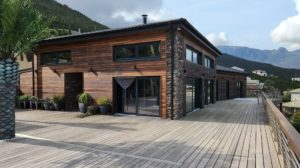


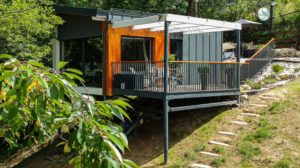






Add comment